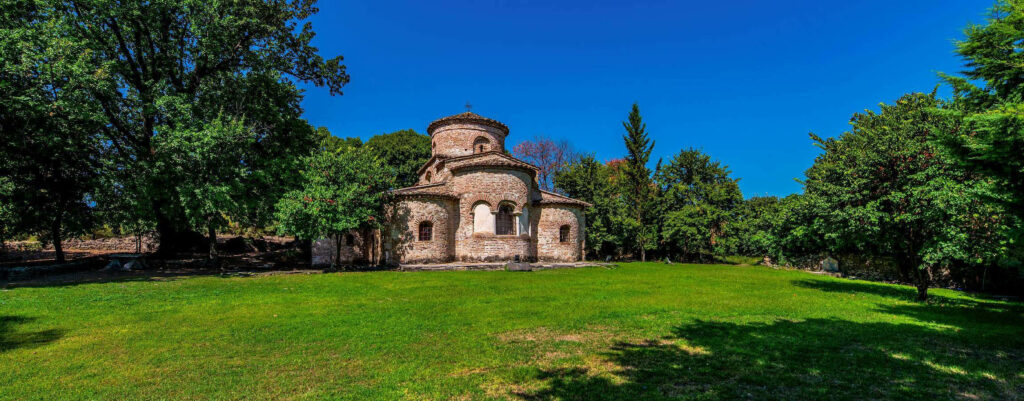Church of Agios Dimitrios | Dion

Agios Dimitrios in Dion is a single-aisled church with an open portico on both sides, most probably built during the 16th century. In its western facade, murals created back in 1740 still survive.
Church of Agios Nikolaos | Tsaritsani

The church of Agios Nikolaos at Tsaritsani was built in the 16th century. Internally, the church is covered in rare murals. Particularly noteworthy is the ‘zodiac’P, the ‘time of year’, and the ‘root of Jesse’, a huge composition that is 5.5m long and includes ninety figures, amongst which twelve full-size wise men from Antiquity.
Church of the Dormition at Kontariotissa

The byzantine church of Theotokos Kontariotissa or Kountouriotissa, overlooking the village named after it, was built in the beginning of the 11th century and is one of the most significant byzantine monuments in Macedonia. Its architecture resembles that of the Agia Sofia church in the city of Thessaloniki; it has a cross-shaped dome surrounded by a gallery and two chapels on the north and on the south side respectively. Inside, there are remainings of murals dating back to the late 15th or early 16th century.
Only a few kilometres away from Panagia Kontariotissa, there is the modern monastery of Agios Efraim one of the most visited monasteries by Greek Christians.
Church of Panagia | Pythio

The church of Panagia at Pythio is a three-aisled basilica with a wooden roof, built in 1638. The church used to function as a monastery and is decorated with lovely murals. It is unique in that it has the only cyclical bell tower in Greece.
New monastery of Agios Dionysios

To the north of Litochoro lies the new Monastery of Agios Dionysios, where the monks of the old monastery were transferred after the latter was blown up by the German occupation forces in 1943. The new Monastery, which used to be the dependency of the historic monastery, keeps the relics that were saved from the fire (manuscripts, icons, crosses, etc.).
Monastery of Agios Antonios | Kokkinogi

The post-Byzantine Monastery of Agios Antonios tis Kokkinogis was built in 1755. The buildings around it are made of stone and there is a unique underground hideout under the church.